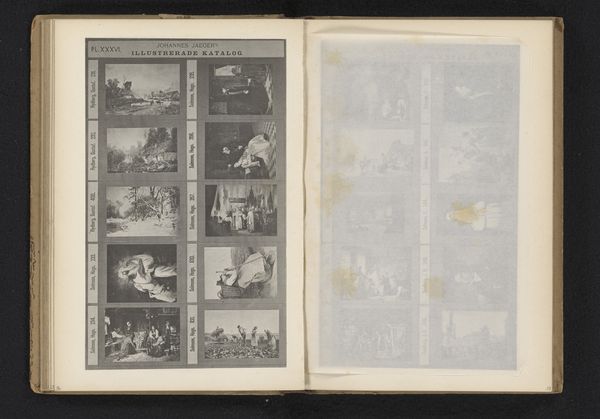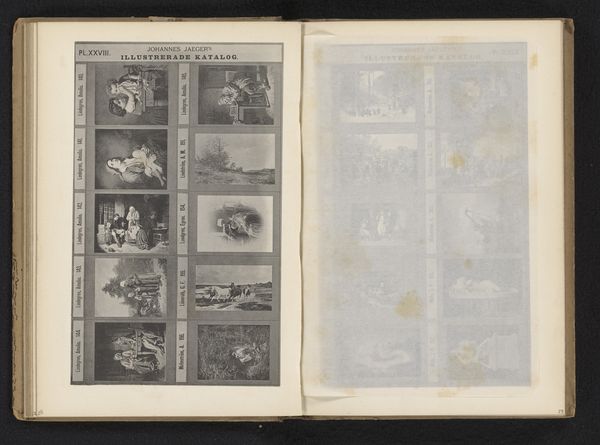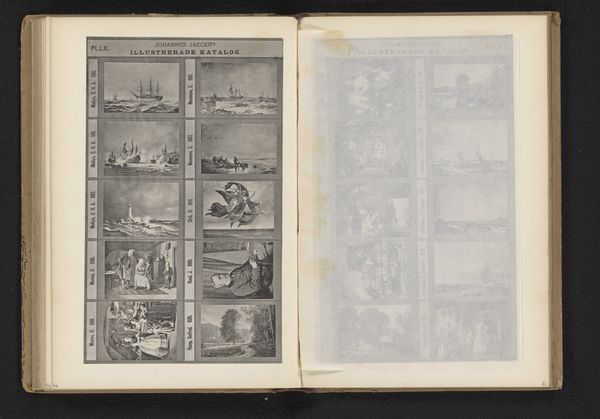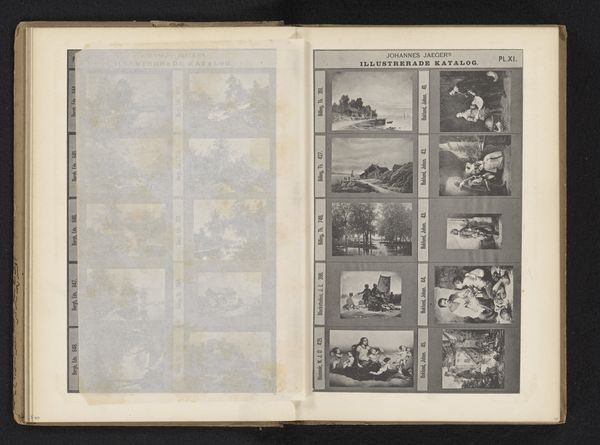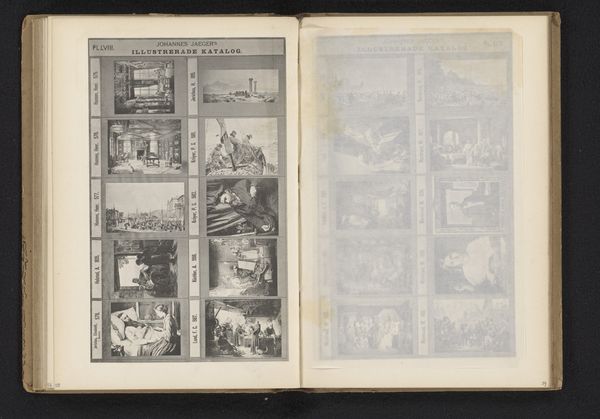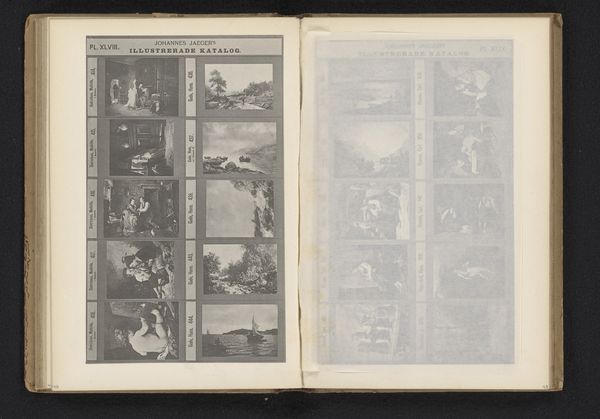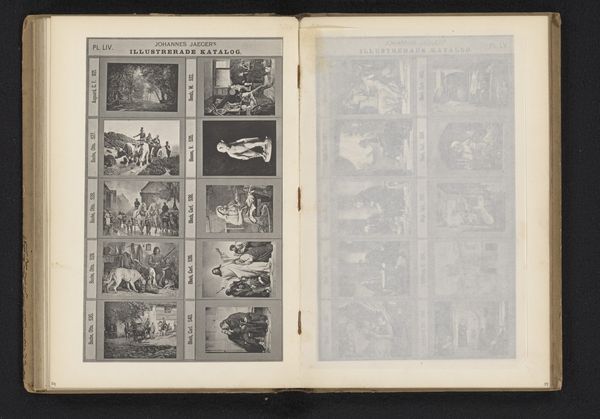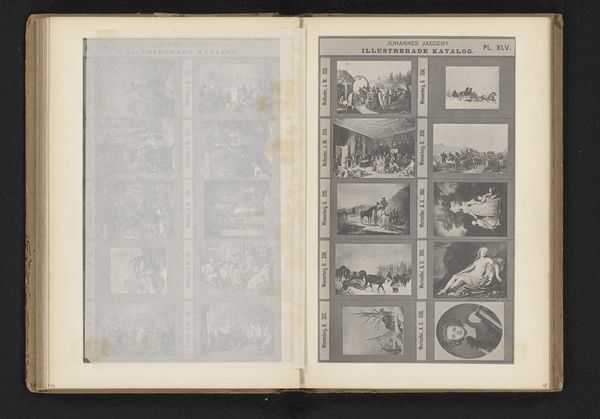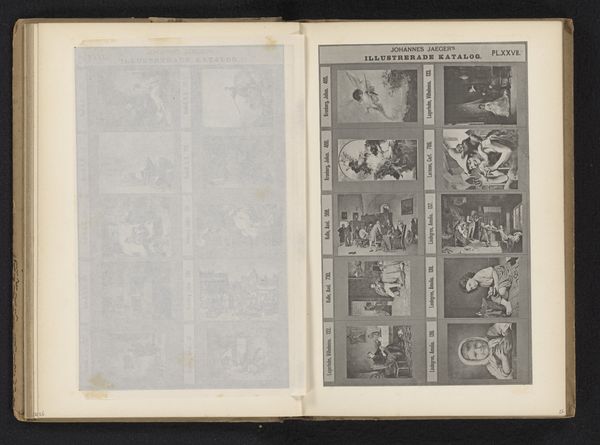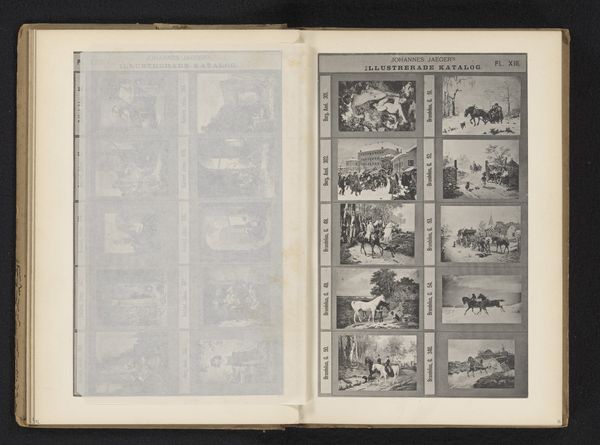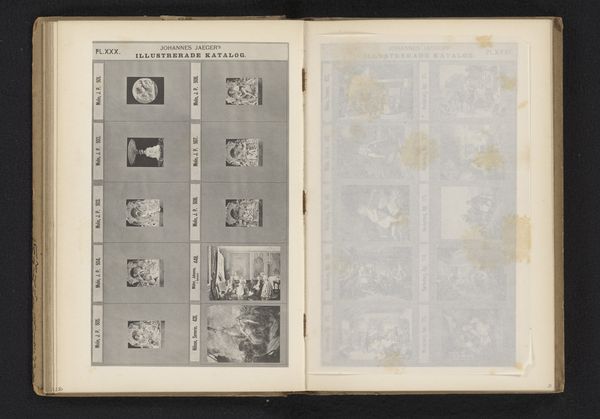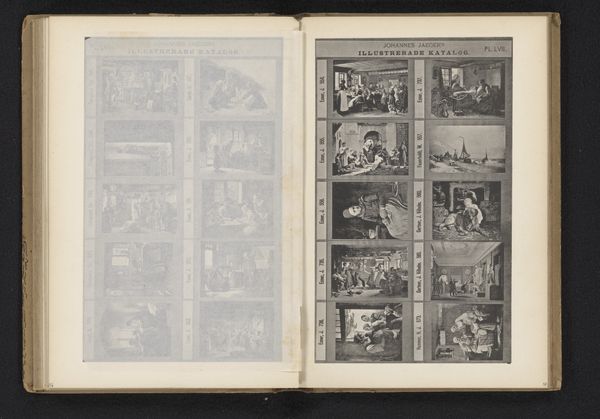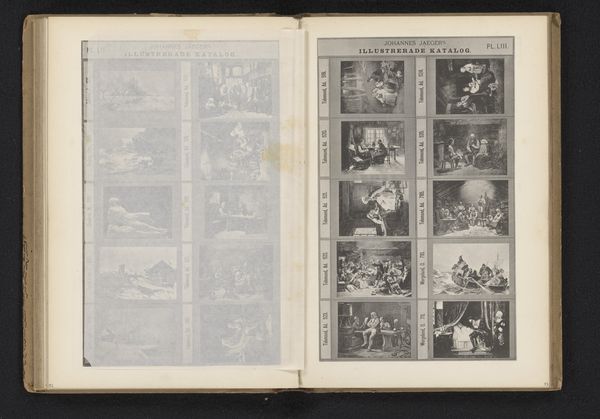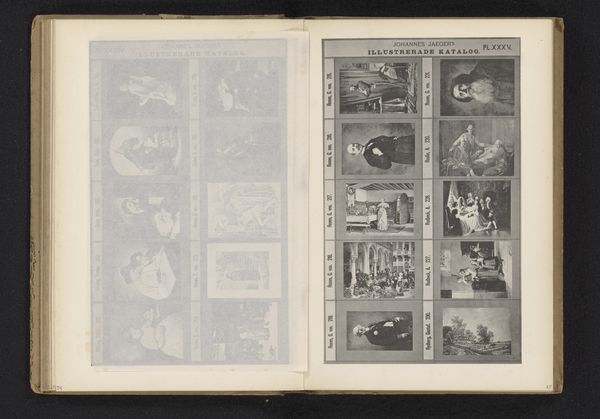
mixed-media, collage, print, paper, photography, sculpture
#
portrait
#
mixed-media
#
collage
# print
#
landscape
#
paper
#
photography
#
sculpture
Dimensions: height 180 mm, width 110 mm
Copyright: Rijks Museum: Open Domain
Curator: This mixed-media piece, entitled "Fotoreproductie van negen schilderijen en een sculptuur," created circa 1872-1882 by Johannes Jaeger, immediately strikes me. It's a compelling collage—the composition a series of reproductions of artworks compiled within what looks like an illustrated catalogue. Editor: It certainly has a grid-like structure to it. Nine miniature images meticulously arranged, with an opposing page containing ghosted reproductions, a faint mirror of the first. It's visually arresting, even in its somewhat faded state. Curator: Absolutely. Consider the context. Jaeger was assembling a visual archive. This compilation points to issues of representation, cataloguing, and perhaps the democratisation of art through reproduction. How might these accessible images influence viewers who might never experience the original artworks? What impact did it have on identity, as these artworks are presented together within a "catalogue"? Editor: Formally, I’m intrigued by the contrast. The sharp, defined squares of the collage on the left play against the blurry, almost spectral images to their right. Note the varied tonality, too, which ranges from dense blacks to pale grays, creating an interesting visual rhythm across the page. The geometry is compelling. Curator: Precisely. We should also consider the subjects of the original artworks reproduced here: landscapes, portraits, a sculpture. What narratives are being reinforced, or even challenged, by juxtaposing them in this manner? What is implied by arranging works from such diverse cultural spheres within a single, unified visual field? What were Jaeger's political and social motivations? Editor: True, the original art held its own symbolic and cultural weight. But through Jaeger's work, the content of the original is less important than the overall design. Note how, for example, the landscapes' horizontal lines balance the sculptures' vertical thrusts; Jaeger achieves an unexpected visual equilibrium, prioritizing pure form. Curator: And the book format itself—it signifies a transfer of knowledge, creating networks of meaning accessible through education. It prompts one to question systems of inclusion and exclusion at the time. Editor: Agreed, a rigorous analysis, though I find the real genius lies within the composition, a successful unification using variety to capture the eye. It provides visual intrigue through surface alone, transcending period constraints. Curator: Perhaps our interpretations circle around the very problematics of reception itself; we have both experienced, on a visceral level, the implications of image transfer, and the complex power dynamics inherent within a book such as this one. Editor: A compelling demonstration that we're often both right, coming from unique viewpoints but understanding each other well enough that something useful has been stated for visitors who have remained with us today.
Comments
No comments
Be the first to comment and join the conversation on the ultimate creative platform.
